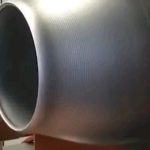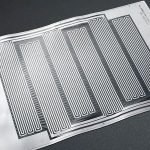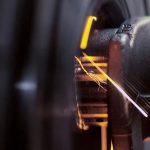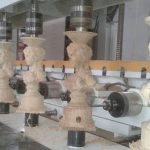Precision parts processing should have the following seven requirements:
- 1. Requirements for technicians: Only an experienced craftsman can formulate a scientific, precise and efficient process flow. The process flow is the guiding specification for precision parts processing and the basis for NC programming. If the workmanship is not good, the whole factory is busy in vain!
- 2. Requirements for equipment precision: The precision of the selected processing equipment itself should meet the precision requirements for precision parts processing. If the precision of the processing equipment cannot meet the requirements, there will be no way to process precision parts that meet the requirements.
- 3. Requirements for operators: Operators are technical engineers who are directly engaged in on-site operations. They need to strictly implement the process flow. They should have the most basic equipment, fixtures and tools. They have rich experience and strong hands-on ability. can actually solve the problem.
- 4. Requirements for measuring tools testing: The quality of measuring equipment directly affects the testing results of precision parts. If measuring equipment, there is no way to detect the required tolerance accuracy. Then it does not have the evaluation of precision parts, let alone provide engineers with quality improvement directions and data.
- 5. Requirements for materials: materials have very different requirements for the processing of precision parts, and different materials have different processing properties. The requirements for processing parameters are also different. We need to choose the appropriate tool, revolution, feed, and various processing parameters according to the processing performance of the material.
- 6. Requirements for tolerance accuracy: The level of tolerance accuracy directly affects the processing technology and the selection of processing equipment and processing parameters. This requires our process engineers and operators to have a quantitative and precise grasp of tolerance accuracy. In order to process precision parts that meet the requirements.
- 7. Requirements for the environment: The processing environment refers to the environment where the machine equipment workshop is located, which must meet the requirements for precision parts processing. Sometimes, the vibration and noise of the floor or the cleanliness of the air, too much dust. Temperature and humidity will affect the accuracy and stability of precision metal and plastic machining stages.
Other requirements for precision parts processing:
- Requirements for machining dimensions of precision parts(As led light parts) :
- Take a cylinder as an example: For example, what is the diameter of the cylinder? Within the allowable range, it will cause the situation that it cannot be inserted. If the actual diameter is too small and exceeds the lower limit of the allowable negative value of the error, it will cause problems that the insertion is too loose and not firm.
- These are unqualified products, or the length of the cylinder is too long or too short, beyond the allowable range of error, they are all unqualified products and must be scrapped or reprocessed, which will inevitably increase the cost.
- The second is advanced non-standard precision parts processing equipment and testing equipment. Advanced processing equipment makes processing precision parts easier, with higher precision and better results.
For precision parts, the processing is very strict, and the processing procedures include cutting in and out. There are specific requirements for the size and accuracy, such as how many microns are plus or minus for 1 mm, etc. If the size is too wrong, it will become a waste product. At this time, it is equivalent to reprocessing, which is time-consuming and laborious, and sometimes even makes the entire processing material scrapped. This has just caused the increase of cost, and at the same time, the parts are definitely unusable.
- In order to ensure the machining accuracy of precision parts, it is best to process rough and fine mechanical parts separately. Because of the large amount of cutting when processing rough mechanical parts, the cutting force and clamping force on the workpiece are large, the heat generation is large, and the machined surface of the mechanical parts has obvious work hardening phenomenon, there is a large internal stress inside the workpiece, if If the processing of rough and rough mechanical parts is carried out continuously, the precision of the finished parts will be quickly lost due to the redistribution of stress.
- Reasonable selection of equipment. Rough machining of mechanical parts is mainly to cut off most of the machining allowance, and does not require high machining accuracy of mechanical parts, so rough machining should be carried out on machine tools with high power and low precision, and the finishing process requires higher Precision machine tool processing.
- In the process route of precision parts processing, a heat treatment process is often arranged. The location of the heat treatment process is arranged as follows: In order to improve the cutting performance of metals, such as annealing, normalizing, quenching and tempering, etc., it is generally arranged before the machining of mechanical parts.






